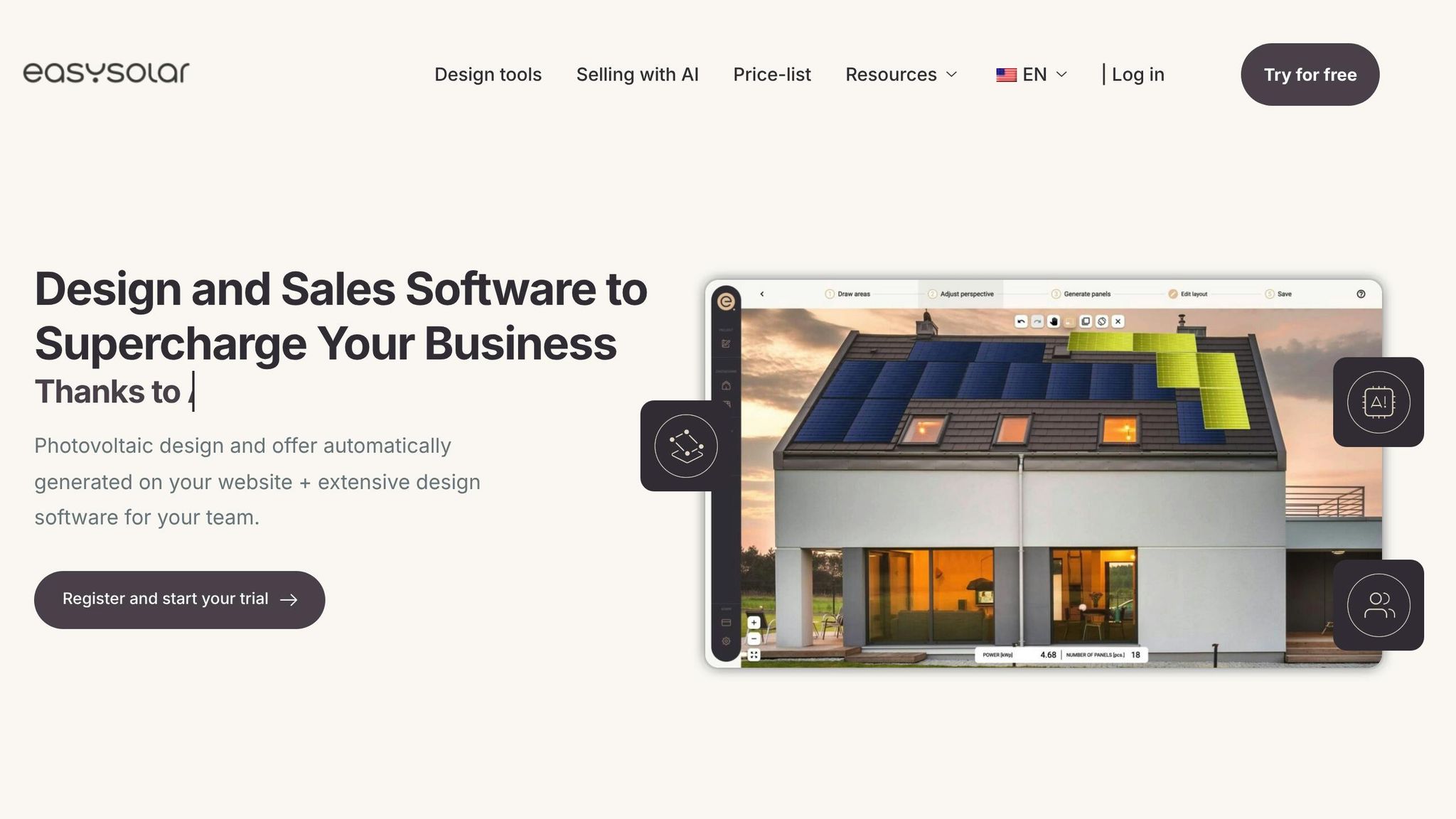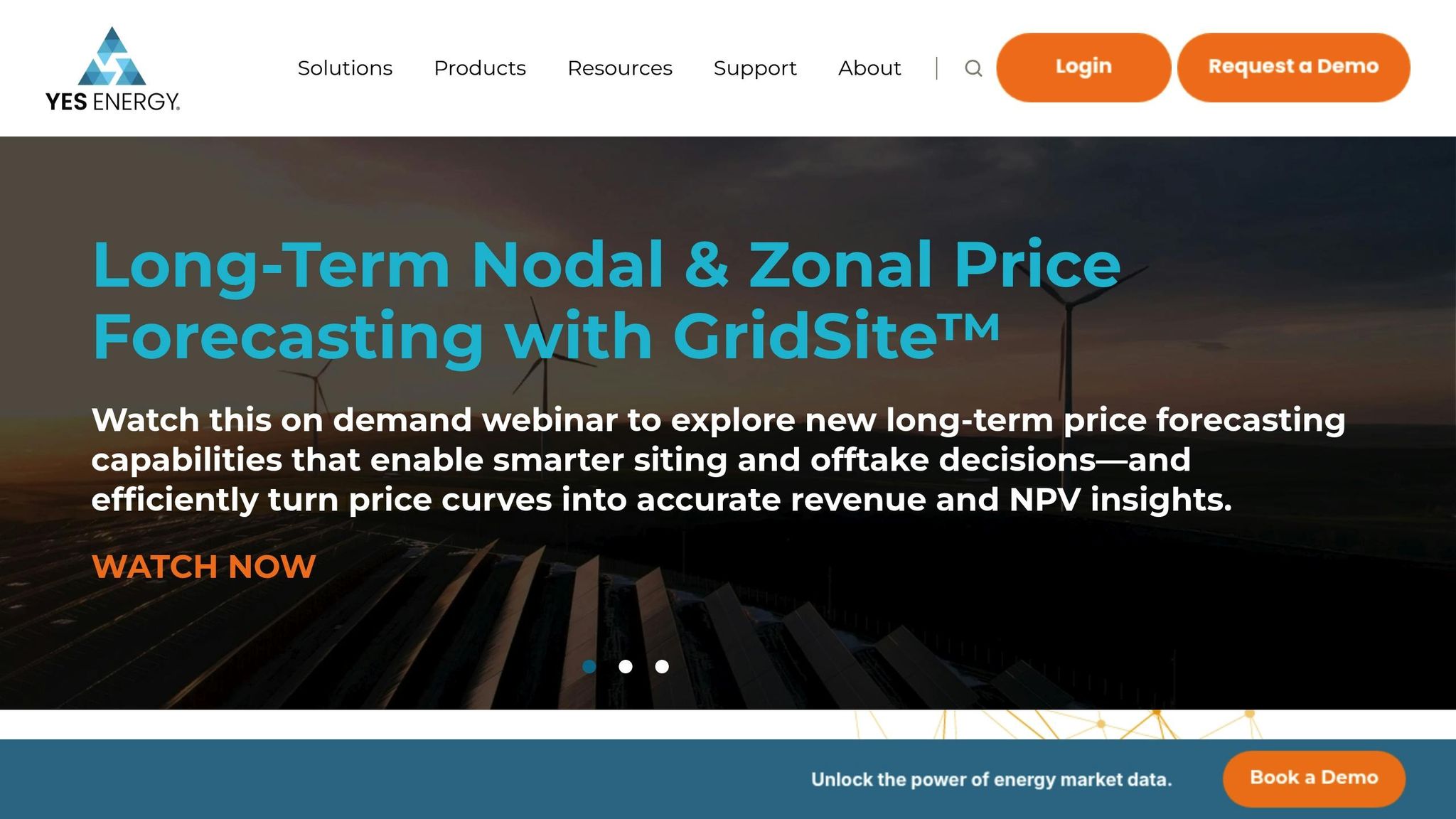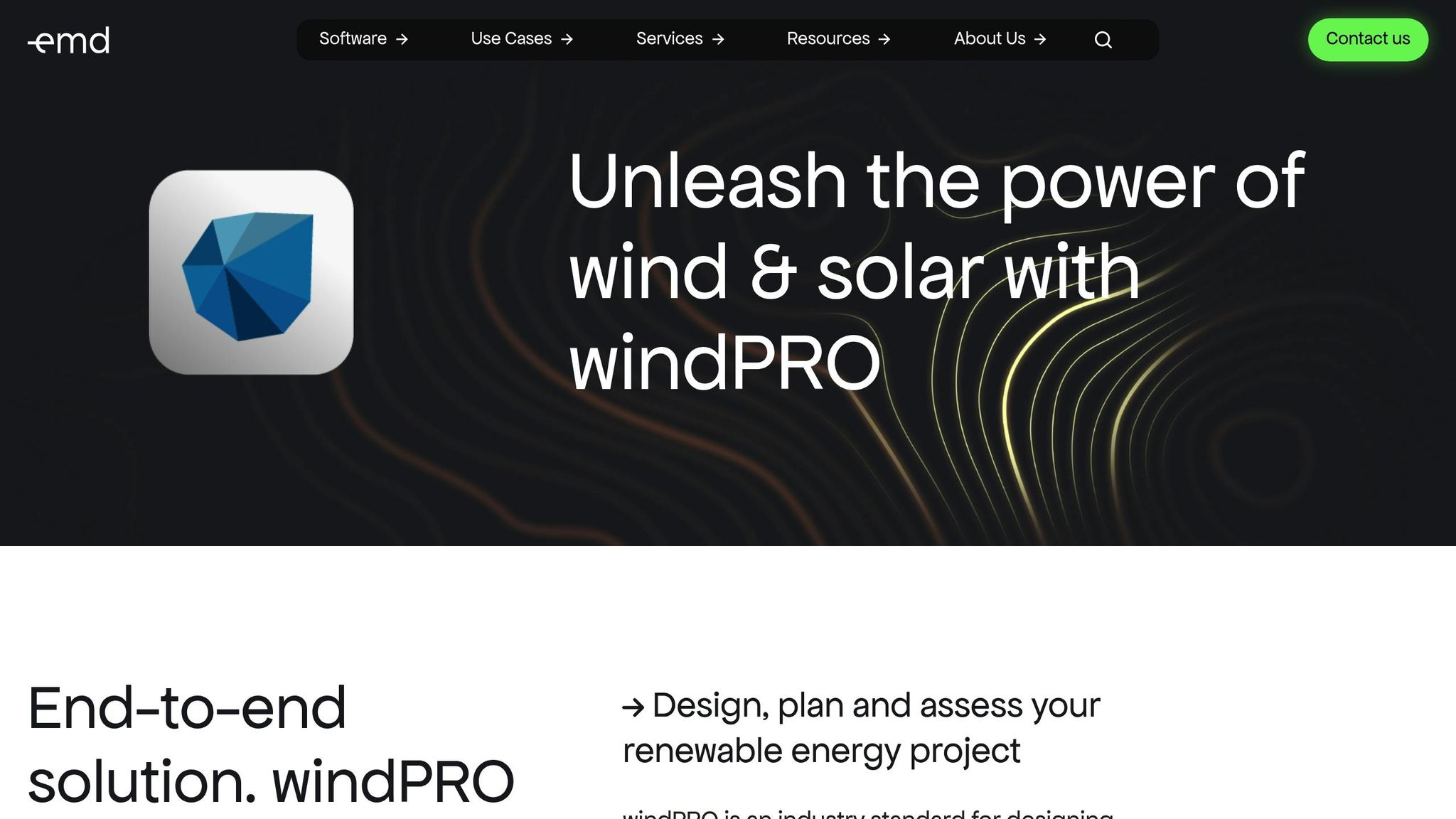Curtailment Planning: Tools for Solar Professionals

Solar curtailment is a growing challenge for developers and asset owners. When solar energy production exceeds demand, grid operators cut output, leading to revenue loss. For instance, a 5% annual curtailment on a utility-scale project could cost hundreds of thousands of dollars over its lifetime.
To navigate this, solar professionals need tools that predict curtailment risks, analyze grid congestion, and optimize project design. The article reviews four platforms offering these capabilities:
- EasySolar: Simplifies design with AI-driven layouts, financial analysis, and collaboration tools. Great for smaller projects with its affordable plans.
- Yes Energy Suite: Delivers long-term market forecasts, grid insights, and simulation tools tailored for U.S. electricity markets.
- Enverus Power & Renewables: Combines real-time market data with advanced modeling to assess financial risks and regulatory compliance.
- windPRO by EMD International: Focuses on grid capacity and transmission bottlenecks, offering seasonal and scenario-based analysis.
Each tool has strengths suited to different project sizes and needs. The right choice depends on your project’s scale, budget, and technical requirements.
1. EasySolar

EasySolar is an AI-powered platform designed to simplify solar project design by combining data integration, simulations, and financial tools. It provides solar professionals with the resources they need to create efficient, accurate, and cost-effective designs.
Data Integration
EasySolar pulls in data from multiple sources, like Google Maps, to automatically generate panel layouts and assess site configurations. Users can also upload drone images, building photos, or custom maps for even greater precision – perfect for designing systems in remote or hard-to-reach locations.
For those looking to streamline their processes further, the Plus plan ($199/month for two users) offers API integration. This allows companies to incorporate historical performance data, financial models, and other metrics directly into the design process, making it a seamless fit for existing workflows.
Simulation Capabilities
The platform’s AI-powered design engine creates multiple layout options, enabling engineers to test various configurations. By experimenting with different panel arrangements and system sizes, solar professionals can fine-tune designs to maximize both energy output and profitability.
Financial Analysis and Collaboration
EasySolar combines financial analysis with design tools, giving teams immediate insights into how design changes impact profitability. This integration helps balance performance with cost-effectiveness. On top of that, collaboration features allow team members to track design updates, leave comments, and receive notifications, keeping everyone on the same page throughout the project.
US Market Compliance
EasySolar supports multi-currency calculations, generates detailed electrical diagrams, and produces customizable PDF proposals that meet US utility standards. This ensures that solar developers can present polished designs and financial reports that align with industry requirements and expectations.
2. Yes Energy Suite

The Yes Energy Suite offers a powerful toolset for tackling renewable curtailment challenges. Its GridSite™ solution is particularly noteworthy, providing key insights into market dynamics that influence solar project profitability and curtailment risks.
Let’s break down how GridSite™ supports solar developers through forecasting, data integration, simulation, and compliance.
Curtailment Insights
A major hurdle in solar development is managing curtailment in grids with high renewable energy penetration. GridSite™ addresses this by delivering clear, long-term nodal Locational Marginal Price (LMP) forecasts. These hourly price projections extend through 2050, giving developers a solid foundation to evaluate revenue risks.
The tool also sheds light on the "duck curve" phenomenon – when midday solar surges coincide with low demand, leading to curtailment. This understanding helps developers anticipate and plan for the economic impacts of curtailment on their projects.
Integrated Data for Better Planning
Beyond forecasting, Yes Energy Suite excels at integrating critical data. By combining ISO interconnection data with other key sources, the platform tracks upcoming transmission and load center projects. This visibility is essential for predicting future curtailment risks, especially in regions where planned renewable projects might overwhelm transmission capacity.
Additionally, the platform allows users to compare the performance and revenue of similar projects. By analyzing existing projects’ operations, revenue streams, and offtake agreements, developers can learn how others have navigated curtailment challenges and structured agreements to reduce financial exposure.
Advanced Simulation Tools
GridSite™ also offers robust simulation capabilities. It uses historical data on pricing, load, generation, and congestion to model scenarios involving transmission constraints and curtailment events.
These simulations provide a clearer picture of how grid congestion and transmission bottlenecks have evolved. Developers can use these insights to make informed decisions about site selection and power offtake strategies, minimizing the risk of curtailment.
Tailored for the US Market
Designed specifically for US electricity markets, Yes Energy Suite aligns with domestic market standards. The platform keeps solar professionals up-to-date on interconnection queues and transmission planning processes, ensuring they are aware of infrastructure developments that could influence curtailment risks.
Its LMP forecasting is tailored to the unique structures of US electricity markets, helping developers understand how curtailment impacts vary across regional transmission organizations and utility territories.
3. Enverus Power & Renewables
Enverus Power & Renewables takes curtailment planning to the next level by combining advanced analysis with a deep understanding of regulatory landscapes. By evaluating grid constraints and renewable capacity, it helps developers make smarter decisions about planning and financing renewable energy projects.
Curtailment Analysis
This feature examines grid conditions and predicts curtailment scenarios to assess their financial impact. By doing so, developers can better understand potential risks and structure contracts with greater precision, ensuring financial stability even when curtailment occurs.
Data Integration
What sets Enverus apart is its ability to merge probabilistic modeling with real-time market data. It integrates critical elements like grid planning data, weather forecasts, short-term production insights, utility rates, and market pricing. This unique blend of information gives developers a clear, forward-looking view of potential challenges, enabling them to act proactively.
Simulation Capabilities
Enverus simulates various curtailment scenarios using probabilistic and sensitivity analyses. These simulations allow developers to evaluate how factors like increased solar deployment, grid changes, and shifts in demand could influence project risks. This detailed approach provides valuable insights for long-term planning and risk management.
Additionally, these simulations help shape regulatory strategies, ensuring that projects stay aligned with changing market standards.
Regulatory Compliance
Staying on top of evolving regulations is crucial, and Enverus simplifies this process. It clarifies market-specific curtailment rules and compliance requirements, helping developers craft effective interconnection agreements that align with current practices and standards. This ensures projects remain compliant while meeting market demands.
4. windPRO by EMD International

windPRO, created by EMD International, originally catered to wind energy projects but has since expanded to include tools for solar curtailment planning. This software helps developers navigate grid-related challenges that can limit the delivery of renewable energy.
Curtailment Insights
windPRO dives into grid capacity issues and transmission bottlenecks that can restrict energy delivery during periods of high production. By analyzing these limitations, the platform provides a clear picture of how local grid conditions affect energy flow, especially during peak production times.
Integrated Data Analysis
The software combines weather data with grid information to highlight seasonal patterns and pinpoint performance issues. This integration helps developers better understand how seasonal changes impact grid reliability and energy delivery.
Advanced Simulation Tools
Beyond assessments, windPRO includes simulation capabilities that allow users to model scenarios where curtailment might occur. These tools are invaluable for identifying potential planning hurdles and addressing them early.
Tailored for the US Market
For developers working in the United States, windPRO offers regulatory analysis to ensure projects comply with regional grid requirements, streamlining the approval process.
sbb-itb-51876bd
Ventajas y desventajas
When exploring curtailment planning tools for proyectos solares, it’s crucial to weigh their practical benefits and challenges. While platforms like EasySolar, Yes Energy Suite, Enverus Power & Renewables, and windPRO by EMD International are often mentioned in industry discussions, detailed comparisons of their specific features, usability, or costs in this context are not always readily available. This makes it essential to use a framework to evaluate their strengths and trade-offs.
Here are some key factors to consider:
- Integration of features: Does the tool combine design, financial planning, and management capabilities seamlessly?
- Usability: Can team members with varying technical expertise navigate and use the platform effectively?
- Grid data access: How well does the tool access and apply grid data to inform curtailment decisions?
- Cost and speed: Is the tool cost-effective and quick to implement, especially for projects of different sizes?
This framework helps provide a clearer picture of each tool’s practical advantages and limitations, even when detailed comparisons are unavailable.
Final Recommendations
After reviewing each platform in detail, it’s clear that selecting the right tool comes down to matching its features with your project’s scale, technical requirements, and budget. There’s no one-size-fits-all solution, so understanding your specific needs is key.
For small to medium projects, EasySolar stands out. It combines design, financial analysis, and CRM tools into one package. With its Basic plan priced at $25 per user per month, it offers a cost-effective way to handle both technical designs and business management tasks.
For larger or utility-scale projects, you’ll want to focus on tools that offer advanced grid integration, in-depth analytics, and regulatory compliance features. Keep in mind that some of these platforms may have steeper learning curves, so ensure your team is prepared to adapt without extensive training.
As highlighted earlier, each tool brings its own strengths to the table, catering to different project sizes and market needs. For larger projects, features like grid compliance and simulation capabilities become essential for scalability and seamless integration.
Ultimately, choose a solution that not only meets your current requirements but can also grow with you. Look for tools that integrate smoothly into your workflow to maintain long-term efficiency and productivity.
Preguntas frecuentes
What are the best strategies and tools for solar professionals to manage curtailment and reduce energy losses?
Solar professionals can tackle curtailment challenges and cut down on energy losses by using advanced software tools. These tools provide precise energy production forecasts and enable real-time system optimization. With these capabilities, professionals can make proactive adjustments to match energy supply with grid demand, reducing wasted energy and boosting revenue.
Adding flexible energy assets – such as battery storage, demand response systems, or carefully negotiated agreements with energy suppliers – can take curtailment management a step further. These strategies help streamline energy distribution, minimize unnecessary curtailment, and improve the overall performance of solar projects.
What should solar professionals consider when choosing a curtailment planning tool for their project?
When choosing a curtailment planning tool, the size of your project is a critical consideration. Larger solar installations often demand advanced tools capable of managing intricate data and addressing grid integration challenges. On the other hand, smaller projects can usually rely on simpler tools, which may also help keep costs in check.
Tu budget plays a significant role as well. Tools with more features often come at a higher price, so it’s important to balance your project’s technical needs with what you can afford. Also, make sure the tool complies with local regulations, meets grid connection standards, and aids in managing operational costs effectively to handle curtailment smoothly.
By weighing these factors thoughtfully, you can choose a tool that streamlines curtailment planning and contributes to the success of your solar project.
How can simulation tools help solar developers reduce curtailment risks?
The Role of Simulation Tools in Managing Curtailment Risks
Simulation tools play a key role in helping solar developers address curtailment risks. These tools provide the ability to model energy production, evaluate grid limitations, and explore storage options with precision, empowering developers to plan smarter and make better decisions about energy dispatch.
By running simulations of different curtailment scenarios, developers can test their assumptions, pinpoint potential challenges, and devise strategies to cut down on energy losses. This proactive approach not only helps safeguard revenue but also ensures smoother integration with the grid, paving the way for more dependable and efficient solar energy projects.
Puestos relacionados
- 7 características esenciales del software de diseño solar moderno
- Lista de control para la gestión de proyectos solares: De la dirección a la instalación
- Guía para el análisis automatizado de sombras en el diseño solar
- Preguntas frecuentes sobre diseño solar: Respuestas para nuevos gestores de proyectos

